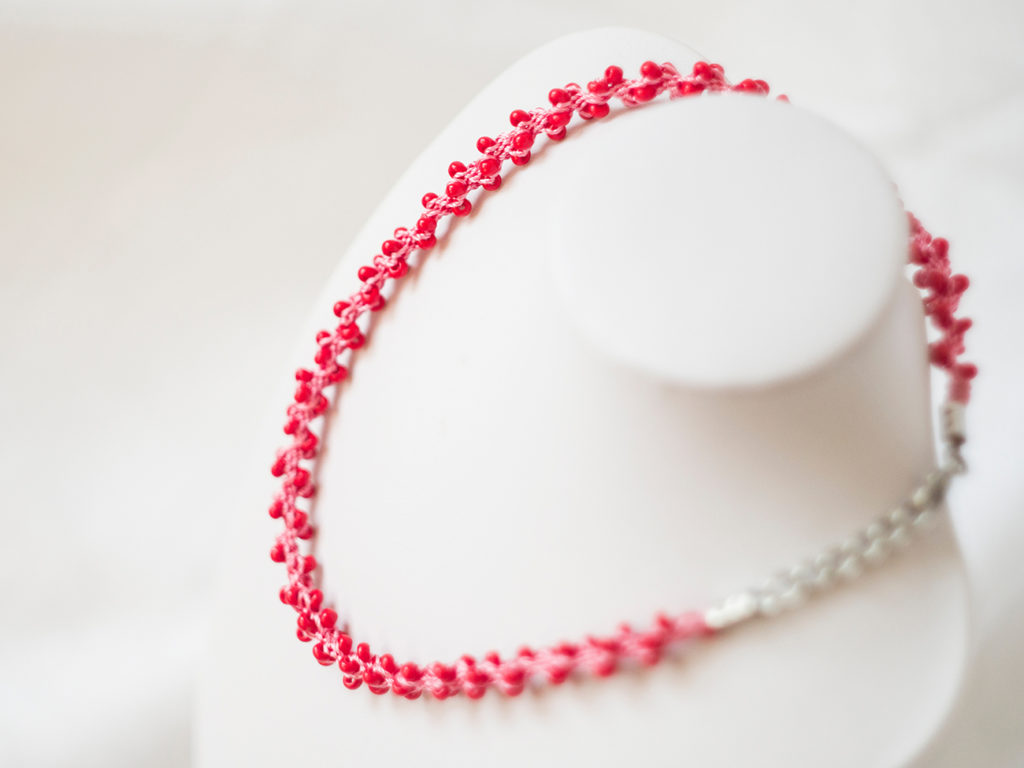
Intricacies and Uses of Kumihimo Braids
Kumihimo is a traditional Japanese form of braiding. Kumihimo can be translated as “gathering of threads.” The earliest form of kumihimo is believed to date back to the Nara Period (710 to 794 CE) when braids were used to secure clothing as well as in some religious ceremonies. The Heian Period (794 to1185 CE) saw braids becoming more elaborate and complex with the growing interest in the Buddhist religion. Braids were still used for clothing but more importantly in decorating temples with most of the braiding done by monks.
Kumihimo bangle
Other uses for kumihimo braids increased with the rise of the Samurai Warrior class during the Kamakura Period (1185 to1333 CE) through the Muromachi Period (1336 to1573 CE) when samurai armor was made of lacquered iron plates joined together with kumihimo. A single samurai suit of armor required as much as 250 to 300 meters of kumihimo braids. In addition to holding the armor together, kumihimo braids were also used in harnessing horses and binding swords. Kumihimo braids were produced in a wide array of widths and sophisticated designs.
KCP Winter 2015 students watch a kumihimo craftsman at work in Asakusa. | KCP Flickr
During the Azuchi–Monoyama (1568 to1603 CE), kumihimo was used when wearing a kimono. With the introduction of the wide obi sash, a braid called obijime was needed to hold it in place and is still used up until today. The Edo Period (1603 to1868 CE) saw the development of most of the widely known traditional patterns with the earliest known published patterns dating back to this period.
You can learn the craft of kumihimo, and even create your own designs to make unique and wonderful bracelets, necklaces, and other pieces.
Check out this video on kumihimo:
